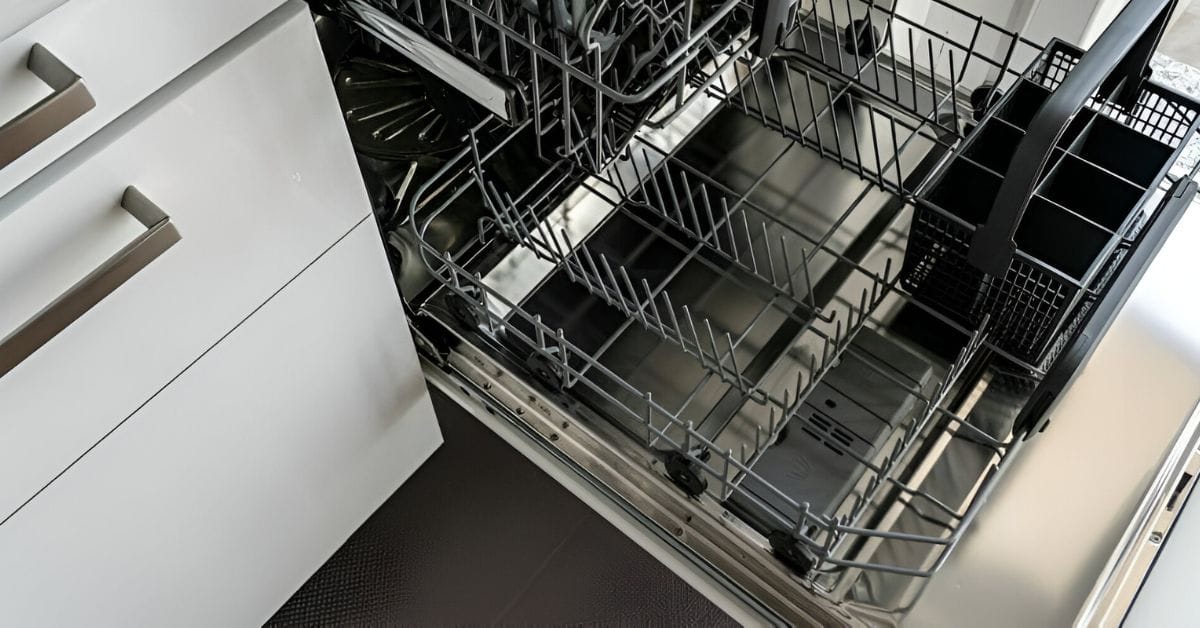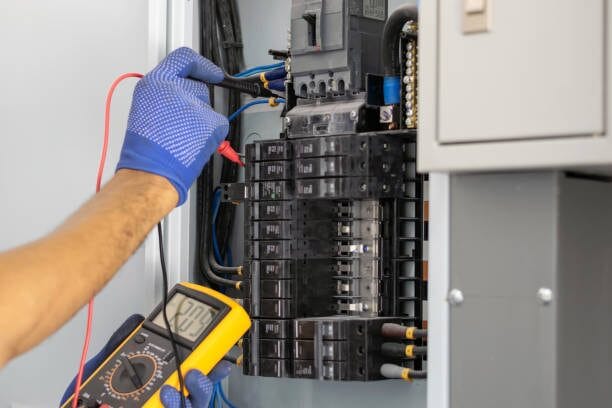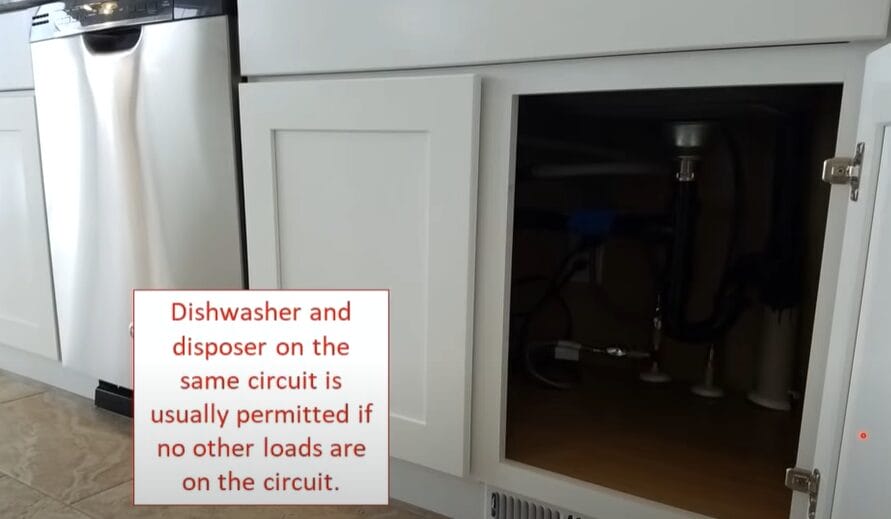Can a Dishwasher and Disposal be on the Same Circuit (Guide)

Hey there! Let’s cut to the chase: Can you run your dishwasher and garbage disposal on the same circuit? It’s a practical question, and the answer isn’t as complicated as it might seem.
You can run both a dishwasher and a garbage disposal on the same circuit, but only if the circuit can handle the combined load of both appliances.
In my hands-on experience, it’s usually better to have separate circuits for each, especially for the more powerful models. This approach helps avoid overloading and the hassle that comes with it.
I’m here to walk you through this, making it as straightforward as reading a simple blueprint. So, let’s roll up our sleeves and dive into this essential aspect of kitchen design.
Understanding Power Requirements

When we’re talking power in the kitchen, it’s all about the amps and volts, folks. You must know what you’re working with to prevent a culinary blackout.
First off, most dishwashers require a 120/125-volt circuit. They’re not too demanding, but they like their space on the electrical playground.
On the flip side, disposals are similar, craving 120-volt attention, but here’s where things get interesting. While they play in the same voltage sandbox, their appetite for amps can vary.
For a frame of reference, a regular dishwasher usually takes about 6 to 10 amps, while garbage disposals are a bit more voracious, munching on about 4 to 8 amps.
It seems manageable, right? If your kitchen’s electrical circuit aims for flexibility, here’s a golden nugget: The total ampere consumption should ideally not exceed 80% of the circuit’s capacity. This is crucial to prevent overloading and keep your kitchen running smoothly.
Considering most kitchen circuits stand strong at 15 to 20 amps, you’re playing a game of electrical Tetris, trying to fit your appliances into the perfect configuration without toppling over. Here’s a quick breakdown to keep it all straight:
| Appliance | Voltage Requirement | Ampere Consumption |
|---|---|---|
| Dishwasher | 120/125-volt | 6-10 amps |
| Garbage Disposal | 120-volt | 4-8 amps |
So, when planning your kitchen’s electrical layout, spread the love across circuits to keep your appliances humming and your culinary creations coming.
Installation Considerations
Getting into the nitty-gritty of Installation Considerations, it’s like piecing together a puzzle.

First, you’ve got to check the electrical codes in your area. These can vary significantly; what works in one place might not fly in another. I’ve seen many projects hit a snag because of overlooked regulations, and trust me, you don’t want to be in that boat.
When considering whether a dishwasher and disposal can share a circuit, remember, the devil’s in the details. Circuit capacity is key. Most homes have 120/240V service, allowing for various configurations.
But, when talking about these two appliances, they don’t just sip electricity – they can gulp it. If both kick into high gear simultaneously, you could trip a breaker unless your circuit can handle the peak load.
Here’s a brief rundown on power usage:
| Appliance | Voltage Requirement | Ampere Consumption |
|---|---|---|
| Dishwasher | 120V | 10-15A |
| Disposal | 120V | 4-8A |
While it’s possible to go DIY on many home improvement projects, wiring isn’t one to take lightly. An electrician can provide insights on whether your existing circuit can handle both appliances or if an upgrade is in order.
Furthermore, consider the practical aspect of daily use. Simultaneous operation may not be an issue for every household, but it’s worth pondering for those who multitask heavily in the kitchen.
As we dive deeper into this puzzle, let’s not forget the safety protocols and efficiency tips. Ensuring that your kitchen’s electrical setup is safe and conducive to your cooking habits can make all the difference in creating a space that’s truly the heart of the home.
Troubleshooting Tips for Shared Circuit Issues with Dishwasher and Disposal
We will pinpoint and fix common issues swiftly, ensuring your kitchen appliances run smoothly without hiccups. Think of this as your quick-fix guide to maintaining harmony in your kitchen’s electrical setup.
Let’s dive in!
| Issue | Symptom | Solution |
|---|---|---|
| Circuit Breaker Trips Frequently | The breaker trips when both the dishwasher and disposal are running. | Ensure both appliances are properly plugged in and their switches are on. If one is plugged into a GFCI outlet, check if it has tripped and reset it if needed. |
| Dishwasher or Disposal Fails to Start | One appliance doesn’t start, but the other works fine. | Lights flicker, or one of the appliances seems to run slower when both are in use. |
| Flickering Lights or Reduced Performance | Lights flicker or one of the appliances seems to run slower when both are in use. | This could indicate an underpowered circuit. Consult an electrician to check the circuit capacity and possibly separate the appliances into different circuits. |
| Strange Noises from Either Appliance | Unusual noises when appliances are running simultaneously. | Identify which appliance is making the noise by running them separately. Inspect the problematic appliance for any blockages or mechanical faults. |
| Unresponsive Controls | Controls on either appliance are unresponsive when the other is running. | This might be due to electrical interference or a wiring issue. Check the wiring and consult an electrician if necessary. |
Safety Tip: Always prioritize safety. Don’t hesitate to call a professional electrician if you’re unsure about a problem or if it seems complex.
Frequently Asked Questions
- How Do I Know If My Circuit Can Handle Both Appliances?
- Check the circuit’s amperage rating and compare it to the total amperage drawn by both appliances.
- Do I Need Special Outlets for These Appliances?
- In kitchens, it’s recommended to use GFCI outlets for safety. They act like a safety guard, cutting off power in case of any issues.
- What If the Circuit Breaker Keeps Tripping?
- If your circuit breaker keeps tripping, you’re overloading the circuit. You may need to upgrade the circuit or connect the appliances to different circuits.
- Can Upgrading the Circuit Solve My Problems?
- Yes, often upgrading the circuit can handle a greater electrical load.
- Can I install a GFCI outlet for the dishwasher and disposal if they share a circuit?
- You can install a GFCI outlet for both appliances on the same circuit. However, ensure the GFCI outlet can handle the combined load and is properly wired.
- Are there any advantages to having a dishwasher and disposal on the same circuit?
- One advantage is that it can save on installation costs since you are using one circuit instead of two. However, you should ensure it doesn’t lead to frequent circuit overloads.
- Can I use an extension cord to connect my dishwasher or disposal if the outlet is far away?
- It’s not recommended to use extension cords for dishwashers or disposals. These appliances should be hardwired or connected to a dedicated outlet to ensure safety and proper operation.
References
Organizations:
- National Fire Protection Association (NFPA). https://www.nfpa.org/en
- International Association of Electrical Inspectors (IAEI). https://www.iaei.org/
Books:
- “Wiring a House” by Rex Cauldwell. https://www.barnesandnoble.com/w/wiring-a-house-rex-cauldwell/1118175264
- “The Complete Guide to Home Wiring” by Black & Decker. https://www.abebooks.com/9780865736368/Complete-Guide-Home-Wiring-Comprehensive-0865736367/plp
Website Resources:
- EnergyStar.gov. https://www.energystar.gov/
- HomeAdvisor.com. http://homeadvisor.com/
- Houzz.com. http://houzz.com/
- ThisOldHouse.com. http://thisoldhouse.com/
Video References:
Ryan Jackson
